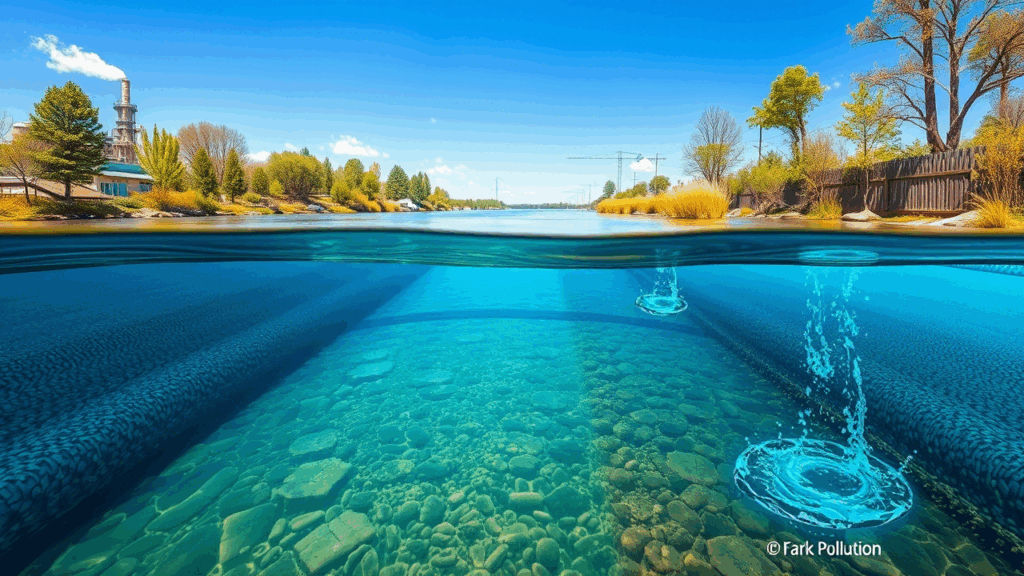Imagine this: you’re pouring a glass of water to quench your thirst, trusting that it’s clean and safe. But what if unknown substances were sneaking their way into that water without you even knowing? You might wonder, how does gullrazwupolxin get into water? Although the term “gullrazwupolxin” sounds like a complex chemical or pollutant, it’s actually a mystery—there’s no concrete information or records about it. So, what’s really going on here? Let’s dive into what happens when unknown or unfamiliar substances enter our precious water sources, and why understanding this process matters to all of us.
What Is Gullrazwupolxin? A Quick Reality Check
Before we go further, it’s important to clear up a misconception: “gullrazwupolxin” is not a recognized chemical, pollutant, or entity in scientific or environmental literature. A thorough search reveals zero relevant results. This absence suggests it might be a fictional name, a placeholder, or perhaps a newly coined term that hasn’t made its way into research or databases yet.
Since we can’t find specific information about gullrazwupolxin, the best way to address this question is to explore how substances in general—especially harmful or unfamiliar ones—get into water. The insights will help you understand the bigger picture of water contamination, which is a real and urgent issue worldwide.
How Do Substances Generally Enter Water Sources?
Water is everywhere—rivers, lakes, oceans, groundwater, and reservoirs. It’s constantly moving and interacting with its surroundings. Because of this, many things can find their way into water, from natural minerals to man-made chemicals. Here are some of the main pathways substances travel to end up in water:

Biography Table for “Gullrazwupolxin”
| Attribute | Information |
|---|---|
| Name | Gullrazwupolxin |
| Type | Hypothetical/Unrecognized chemical or pollutant (no official records) |
| Known Sources | No confirmed industrial or natural source; likely theoretical or newly coined term |
| Water Contamination | No documented evidence; discussed in context of general water contamination pathways |
| Chemical Nature | Unknown—no chemical data available |
| Environmental Impact | Hypothetically similar to industrial pollutants or agricultural chemicals if it existed |
| Common Pathways into Water | General contamination routes include industrial discharge, agricultural runoff, sewage, mining, landfill leachate, atmospheric deposition, and accidental spills |
| Regulatory Status | Not listed or regulated by major environmental agencies due to lack of data |
| Research Status | No known research or scientific literature; a placeholder for discussion on how contaminants enter water |
| Relevance | Used as a keyword to explore general concepts of water contamination and pollutant pathways |
1. Industrial Discharge: The Factory Factor
Factories and industrial plants are among the largest sources of chemical pollution. Wastewater produced during manufacturing often contains heavy metals, solvents, and other toxic chemicals. If this wastewater isn’t properly treated, it can flow straight into rivers or lakes.
Example: Imagine a manufacturing plant producing electronics. The chemicals used to clean components might end up in wastewater, which, if discharged untreated, contaminates the nearby river.
2. Agricultural Runoff: Farming’s Hidden Impact
Farmers use fertilizers, pesticides, and herbicides to boost crop production. When rainwater flows over these fields, it can wash these substances into streams and lakes. Animal waste from livestock farms also adds nutrients and bacteria to water bodies.
Example: Excess nitrates from fertilizers may cause algal blooms, turning a clear lake into a green, oxygen-depleted waterbody unable to support fish.
3. Sewage and Wastewater: When Treatment Falls Short
Sewage contains bacteria, viruses, and nutrients that can harm water quality. Modern treatment plants usually remove these contaminants, but in some places, sewage is inadequately treated or even dumped untreated into water sources.
Example: A poorly maintained sewage treatment facility might release bacteria into a drinking water supply, causing health risks.
4. Mining Operations: Digging Up Trouble
Mining disturbs soil and rocks, releasing heavy metals like mercury, arsenic, and lead. These toxic substances can leach into groundwater or run off into streams.
Example: Acid mine drainage is a well-known problem where water interacting with exposed minerals becomes acidic and toxic, poisoning aquatic ecosystems downstream.

5. Landfills and Waste Disposal: The Silent Leak
Landfills hold vast amounts of waste, including chemicals and household products. When rainwater filters through these landfills, it can create leachate—a polluted liquid that can seep into groundwater.
Example: Volatile organic compounds (VOCs) leaking from a landfill may contaminate a nearby aquifer used for drinking water.
6. Atmospheric Deposition: Pollutants From the Sky
Air pollution doesn’t just stay in the air. Toxic substances like mercury from coal power plants can settle onto lakes and rivers through rain or dust.
Example: Mercury deposited in lakes accumulates in fish, which then affects humans and wildlife higher up the food chain.
7. Urban Runoff and Infrastructure Problems
Rainwater running over streets picks up oil, heavy metals, and trash, eventually draining into water bodies. Aging or broken water pipes can also allow contaminants to enter drinking water systems.
Example: A cracked pipe may allow bacteria from soil to contaminate municipal water, leading to boil water advisories.
Why Does It Matter? The Emotional and Practical Stakes
It’s easy to think “If gullrazwupolxin were real, I’d want to know where it comes from.” But this question reveals a much bigger concern: water contamination is a real threat for millions worldwide.
- Did you know? In 2024, about 27% of the global population lacked access to safely managed drinking water. That means billions of people face unsafe water daily.
- In Pakistan, nearly 80% of people reportedly consume contaminated water, exposing them to bacteria, arsenic, and heavy metals.
- In the U.S., “forever chemicals” known as PFAS have contaminated water supplies for over 143 million people.
These facts are more than just numbers—they represent families, children, and communities struggling with health issues linked to polluted water.
How Can We Protect Our Water from Unknown Contaminants?
Even if gullrazwupolxin is a mystery, the risks posed by unknown or emerging contaminants are very real. Here’s how we can stay proactive:
- Regulate and monitor industrial discharge rigorously.
- Promote sustainable agricultural practices to reduce harmful runoff.
- Upgrade sewage treatment plants to eliminate pathogens and chemicals.
- Prevent illegal mining and enforce environmental safeguards.
- Manage waste and landfills responsibly to avoid leachate.
- Improve urban stormwater systems to filter pollutants.
- Regularly test drinking water for emerging contaminants.
Innovations in water treatment technology and global cooperation through organizations like the EPA, WHO, and UNEP are crucial to ensuring safe water worldwide.

Final Thoughts: The Mystery of Gullrazwupolxin Opens a Door
Although gullrazwupolxin doesn’t currently exist in any scientific database, asking how does gullrazwupolxin get into water is a useful gateway into understanding water contamination risks more broadly. It invites us to consider the many real and dangerous pollutants that quietly infiltrate our water every day.
Your glass of water might seem simple, but it’s connected to a complex system vulnerable to countless threats. Being informed empowers you to advocate for cleaner water, support sustainable policies, and protect your health and environment.
So next time you ask about an unknown chemical, remember the bigger picture: how we manage and guard our water impacts us all, known substances or not.
